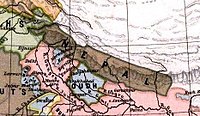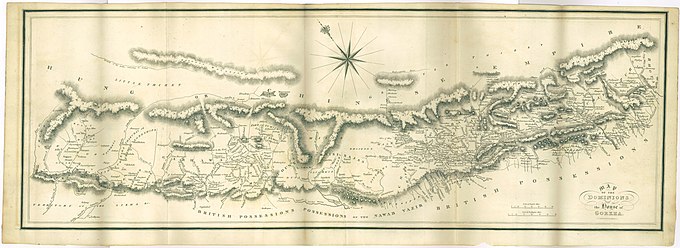
Back تاريخ نيبال Arabic Historia de Nepal AST Непал тарихы Bashkir Гісторыя Нэпалу BE-X-OLD नेपाल के इतिहास Bihari নেপালের ইতিহাস Bengali/Bangla Història del Nepal Catalan Dějiny Nepálu Czech Geschichte Nepals German Historia de Nepal Spanish
This article has multiple issues. Please help improve it or discuss these issues on the talk page. (Learn how and when to remove these messages)
|
| History of Nepal |
|---|
 |
|
|
| History of South Asia |
|---|
 |

Nepal is a multi-ethnic, multiracial, multicultural, multi-religious, and multilingual country. The most spoken language is Nepali followed by several other ethnic languages.
The modern day Kingdom of Nepal was established in 1768 and started a campaign of unifying what would form the modern territories of Nepal. Some former territories had been lost due to the Sino-Nepalese War. The conflict ended with both victories and losses with the kingdom ultimately accepting tributary status with the Qing dynasty of China from 1792 to 1865.[1] The Anglo-Nepalese War ended in British victory and resulted in the ceding some Nepalese territory in the Treaty of Sugauli. In a historical vote for the election of the constituent assembly, the Nepalese parliament voted to abolish the monarchy in June 2006. Nepal became a federal republic on 28 May 2008 and was formally renamed the 'Federal Democratic Republic of Nepal' ending the 200-year-old reign of the Shah monarchs.
- ^ "Nepal," pp. 609-610., p. 609, at Google Books